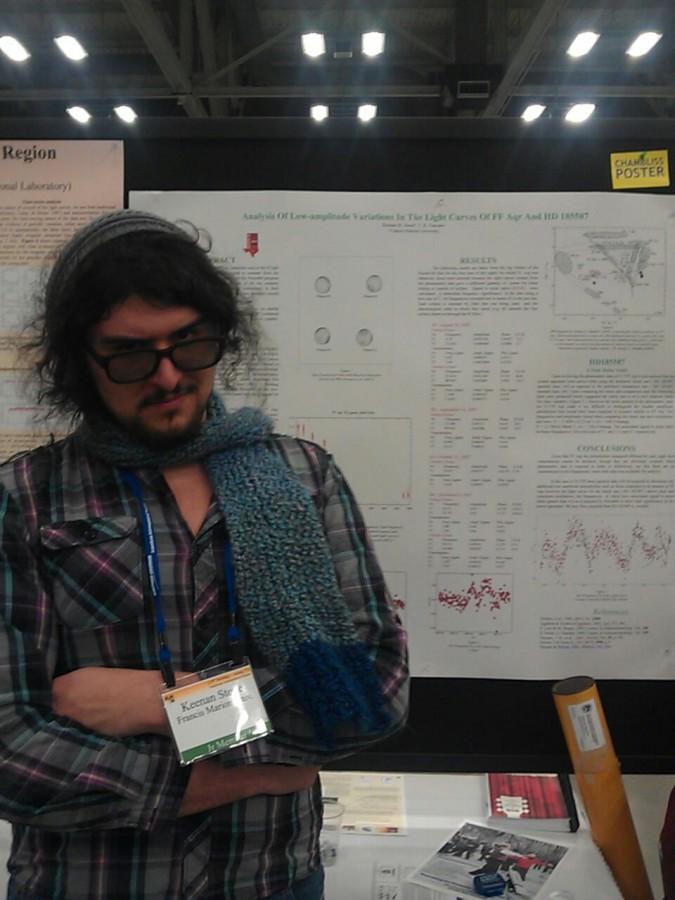Two members of FMU recently presented posters about their research at the 219th Meeting of the American Astronomical Society held from Monday, Jan. 8 through Thursday, Jan. 12 in Austin, Texas.
Dr. Todd Vaccaro, assistant professor of Physics at FMU, presented his poster titled “New Observations of the Eclipsing Red Dwarfs in LP133-373.”
Vaccaro analyzed data gathered at Kitt Peak over the past couple of years to determine characteristics of the red dwarfs in the binary system.
“We got spectra of this binary and we were able to measure the radial velocities of the stars, and that allowed us to do a lot more fundamental determination of all the physical characteristics of the stars themselves,” Vaccaro said.
Vaccaro said that because of bigger telescopes, and more time to observe the stars, astronomers are starting to find that observed parameters don’t fit existing stellar models.
“Red dwarf stars are interesting because we’re just now starting to see some interesting things about them,” Vaccaro said. “Since they are so faint, they have not been looked at that much until recently because now there are bigger telescopes and more [observing] time is available.”
Senior physics and math major Keenan Stone accompanied Vaccaro on the trip to present his poster on “Analysis of Low-Amplitude Variations in the Light Curves of FF Aqr and HD 185587.”
Stone used a program called Period04 to analyze photometric data collected by Vaccaro from 2005-2006 using SARA for consistencies in low-amplitude variations from FF Aquarius, an eclipsing binary.
Stone explains that since SARA is an earth telescope, it was subject to more error than a space telescope; however, the signal-to-noise ratio was enough to draw conclusions.
“We weren’t able to find any consistent frequencies, but we found that signal-to-noise ratio gave us amounts greater than 4, which means that it is a significant signal.”
Stone said that in the analysis of V1379 Aql binary, it was found that when using HD 185587 as a check star, the system appeared to be more active.
“A check star is a star of constant intensity that is in the same portion of the sky and is used as a reference when measuring another star’s characteristics,” Stone said.
Stone’s analysis of the check star HD 185587 led to conclusions that would classify the star as Delta Scuti class variable.
Stone said that though the conference included many intense and technical talks, it was a great opportunity for his future.
“This particular conference was an excellent opportunity for me to scout out possible places for a job over the summer, as well as potential grad schools,” Stone said.
Stone’s interactions with fellow astronomers have encouraged him to apply to an infrared array observatory.
